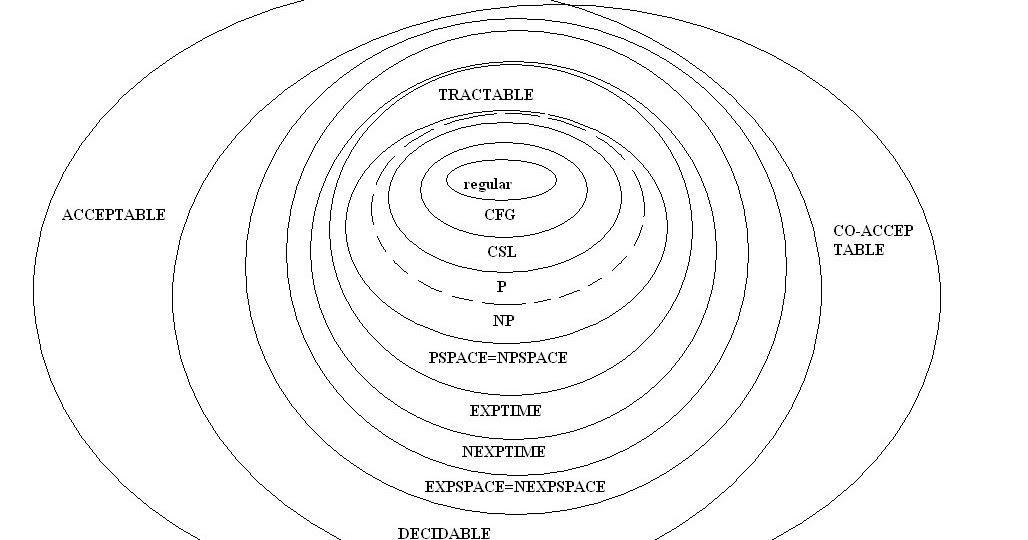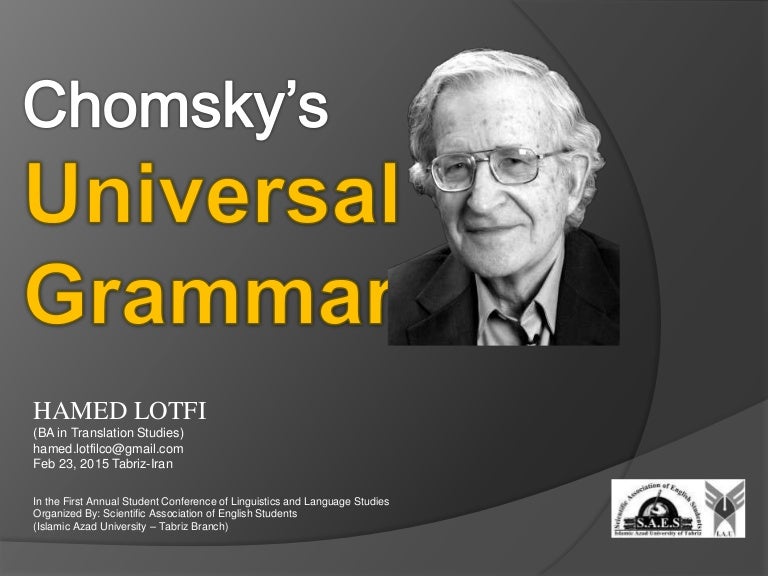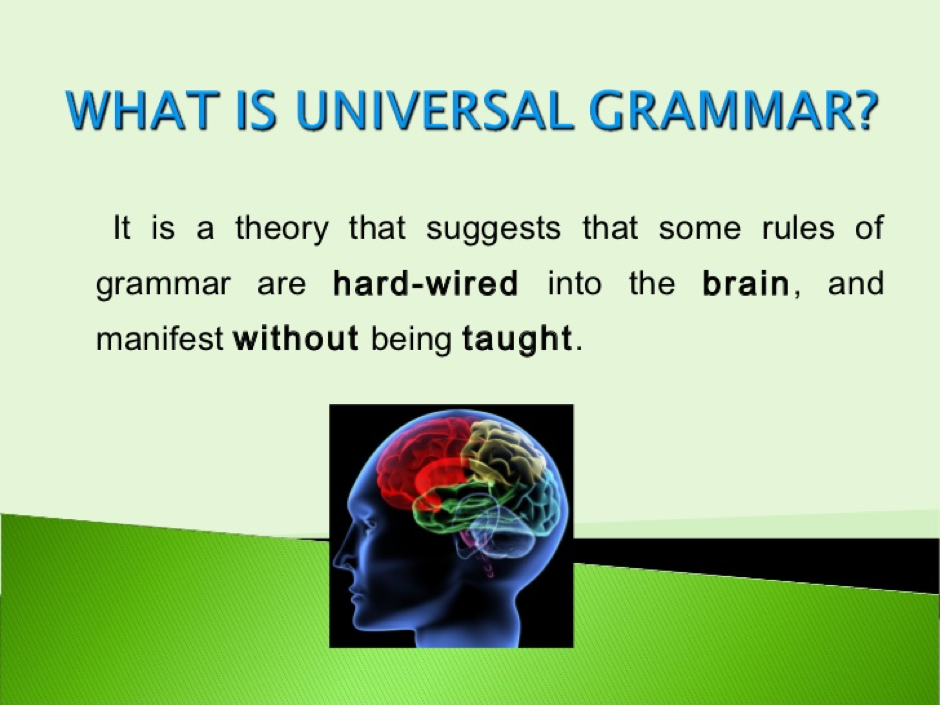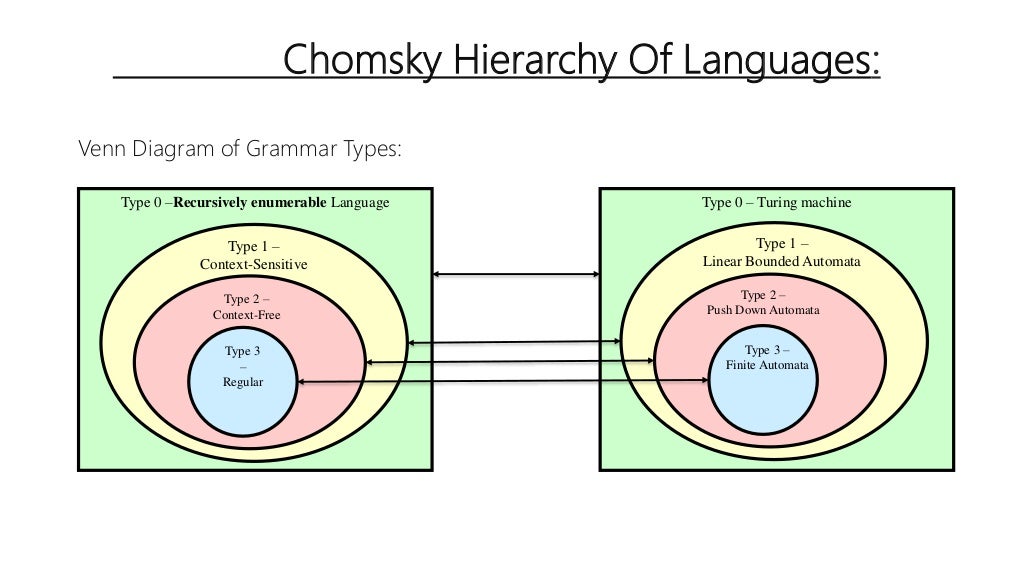
Computer Science Study Guide Chomsky Hierarchy Diagram for Languages.
Chomsky Classification of Grammars According to Noam Chomosky, there are four types of grammars − Type 0, Type 1, Type 2, and Type 3. The following table shows how they differ from each other − Take a look at the following illustration. It shows the scope of each type of grammar − Type - 3 Grammar Type-3 grammars generate regular languages.

Chomsky Classification of Languages Types of Grammars Automata Theory
Most famous classification of grammars and languages introduced by Noam Chomsky is divided into four classes: Recursively enumerable grammars -recognizable by a Turing machine Context-sensitive grammars -recognizable by the linear bounded automaton Context-free grammars - recognizable by the pushdown automaton

Chomsky classification of Language
Linguistics - Modifications, Chomsky, Grammar: Chomsky's system of transformational grammar was substantially modified in 1965. Perhaps the most important modification was the incorporation, within the system, of a semantic component, in addition to the syntactic component and phonological component. (The phonological component may be thought of as replacing the morphophonemic component of.

Chomsky’s Universal Grammar
There are 4 levels - Type-3, Type-2, Type-1, Type-0. With every level, the grammar becomes less restrictive in rules, but more complicated to automate. Every level is also a subset of the subsequent level. Type-3: Regular Grammar - most restrictive of the set, they generate regular languages.
GitHub AhmdFahad/ChomskyGrammarClassificationProject
The Chomsky hierarchy, developed by Chomsky and others during the late 1950s, is a formal classification of algorithmic production systems ('grammars') and the languages generated by them into four types, called types 3, 2, 1 and 0, such that each higher type is a proper subset of each lower type (see Chomsky 1963 for a full, technically elabora.

What is Chomsky Hierarchy in Theory of Computation
According to Chomsky hierarchy, grammar is divided into 4 types as follows: Type 0 is known as unrestricted grammar. Type 1 is known as context-sensitive grammar. Type 2 is known as a context-free grammar. Type 3 Regular Grammar. Type 0: Unrestricted Grammar: Type-0 grammars include all formal grammar.

Lalkar Critique of the linguistic theory of Noam Chomsky
Summary. The classification of grammars that became known as the Chomsky hierarchy was an exploration of what kinds of regularities could arise from grammars that had various conditions imposed on their structure. Intersubstitutability is closely related to the way different levels on the Chomsky hierarchy correspond to different kinds of memory.

Chomsky Classification Chomsky classification of grammar GATECSE
Summary. The classification of grammars that became known as the Chomsky hierarchy was an exploration of what kinds of regularities could arise from grammars that had various conditions imposed on their structure. Intersubstitutability is closely related to the way different levels on the Chomsky hierarchy correspond to different kinds of memory.

PPT The Chomsky Hierarchy PowerPoint Presentation, free download ID
The classi cation of grammars that became known as the Chomsky hierarchy was an exploration of what kinds of regularities could arise from grammars that had various conditions imposed on their structure.

6.6 Type 2 Grammar Context free grammar Chomsky classification of
Chomsky classification The grammars of Example 3 have the nice following property: every production has the form A where A is a non-terminal symbol and is a string of grammar symbols. These grammars are called context-free grammars and will be studied in the next section.

Chomsky Hierarchy
Here, the grammar- and automata-theoretic characterizations of the Chomsky hierarchy are much less useful. As we saw in §§2 d and 4, mechanisms with widely differing natures often turn out to be equivalent in the sense that they are capable of describing exactly the same class of languages. 10

Chomsky Hierarchy of Formal Languages Types of Grammars/Languages
The Chomsky hierarchy (infrequently referred to as the Chomsky-Schützenberger hierarchy [1]) in the fields of formal language theory, computer science, and linguistics, is a containment hierarchy of classes of formal grammars.

Chomsky Classification of Languages YouTube
The Chomsky hierarchy is a containment hierarchy of classes of formal grammar, as described by Noam Chomsky in 1956. It is an essential tool used in formal language theory, computer science, and linguistics. This unique structure can be represented in the form of a pyramid, with type 0 at the base and type 3 at the peak.

6.5 Type 1 Grammar Context Sensitive Grammar Length Increasing
The Chomsky Hierarchy is a strict hierarchy of four families of grammars that are of linguistic (as well as mathematical and computational) significance: Two of these grammar models are familiar: left (or right) linear grammars specify regular languages, and context-free grammars specify context-free languages.

6.3 Chomsky Hierarchy Identification of Grammar Theory of
Chomsky Hierarchy represents the class of languages that are accepted by the different machine.According to Noam Chomsky, there are four types of grammars −.

Chomsky classification of Language
The category of language in Chomsky's Hierarchy is as given below: Type 0 known as Unrestricted Grammar. Type 1 known as Context Sensitive Grammar. Type 2 known as Context Free Grammar. Type 3 Regular Grammar. This is a hierarchy. Therefore every language of type 3 is also of type 2, 1 and 0.